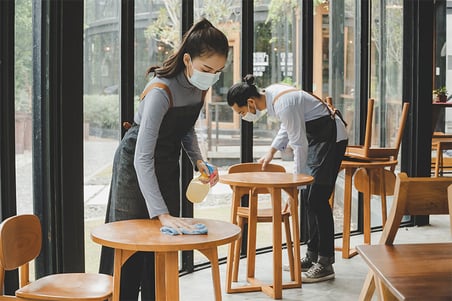Mariane Hodgkinson, hygiene specialist at Hillbrush looks at best practice for caterers regarding cleaning and hygiene:
 “Ensuring that your food and beverage operation is clean and tidy is a normal prerequisite of good food hygiene practice but post-pandemic when hygiene protocols are even more visible than usual, it pays for catering operators to make cleaning and hygiene both front and back of house even more of a priority.
“Ensuring that your food and beverage operation is clean and tidy is a normal prerequisite of good food hygiene practice but post-pandemic when hygiene protocols are even more visible than usual, it pays for catering operators to make cleaning and hygiene both front and back of house even more of a priority.
Good cleaning means good hygiene
“Alongside a thorough HACCP plan, using high quality colour coded cleaning equipment along with good cleaning practices are key to avoiding cross-contamination. So, at a basic level, the same equipment should not be used to clean surfaces in contact with food as cleaning the floor. Using colour coded brushes for different types of cleaning jobs will help keep a rigorous cleaning programme in place. This is a practice widely used in food manufacturing which is now being adopted in many catering operations.
The importance of training staff in food hygiene
“Once food hygiene procedures are in place, all staff need to have adequate training to ensure they are implemented effectively. It’s good practice to ensure any new starters too have an induction to understand the basic principles of food safety relevant to their role before they start work. It is also ideal to record any training, so you can show enforcement officers during their visits that you have implemented a training programme.
“As a legal minimum, all food handlers must receive training relevant to their duties and responsibilities – generally this is basic food hygiene training (Food Safety Level 1 or 2). As an ideal, all supervisory and management staff should receive higher level training at either level 3 or 4 food safety”.